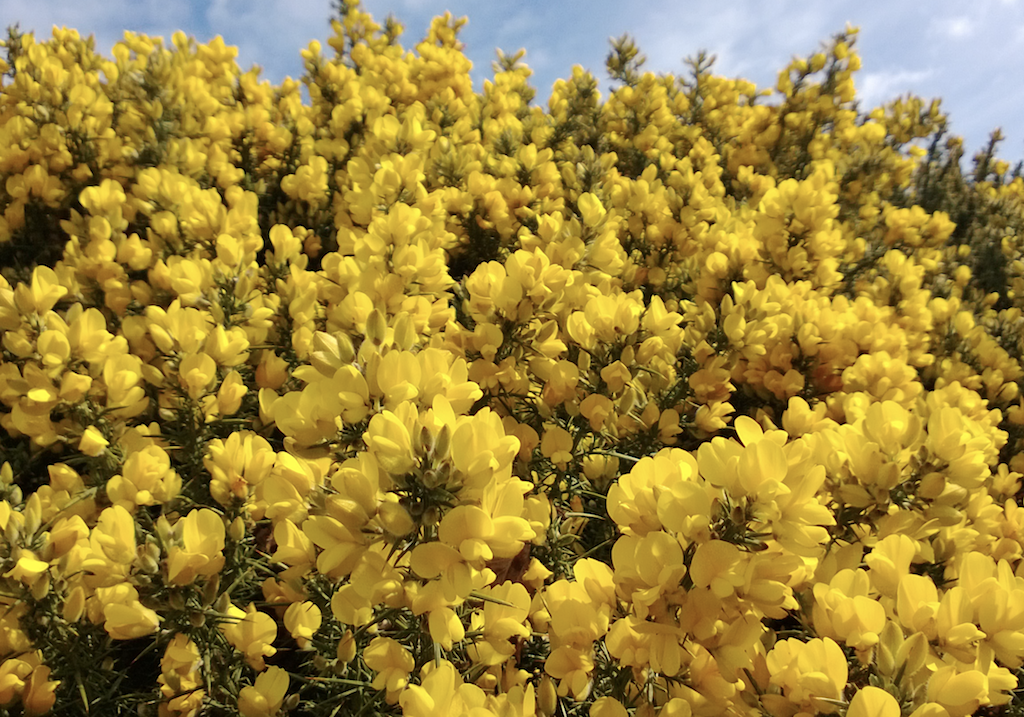Beekeepers of Ireland rise up and protest against the Heritage Bill before all this goes up in flames!

Meet outside Dáil Éireann with Gerry Ryan et al at 12.30 on 2nd March 2017 and let our Senators know we are against this stupid Bill!
Beekeepers of Ireland rise up and protest against the Heritage Bill before all this goes up in flames!

Meet outside Dáil Éireann with Gerry Ryan et al at 12.30 on 2nd March 2017 and let our Senators know we are against this stupid Bill!
The Heritage Bill, due before the Seanad this week (21st February 2017 ) seems to have nothing at all to do with Heritage other than to extend the period landowners or County Councils can burn, cut, grub or otherwise erase the natural bit from the landscape. That natural bit is the bit our bees rely on.
February 1st is the Feast Day of St Brigid (AD450-525) female patron saint of Ireland.
For us Celts it is also the first day of Spring but you Saxon Dogs will have to wait till March 20th!
For the bees though – read on: Continue reading Bee Flowers – February
Sorry – sold out for 2017
Selected for sweet nature, low-swarming, productivity and Varroa resistance.
Contact info@beespoke.info Continue reading Native Irish Queen Bees
A word of warning to those of you out there with dogs who love to chase sticks. A stick can bounce and slice a dog’s throat all the way down to its shoulder. Continue reading Murphy’s Last Stick
Christmas is one of the four quarter days which mark the changing of the seasons.
The four quarter days are:
They all approximately coincide with either an equinox or a solstice.
The picture above is by Vincent Van Gogh (obviously says you), it lives in the Van Gogh Museum, Amsterdam and is called ‘Wheatfield with Crows’. It was painted in 1890 – possibly his last picture. Vincent didn’t know about climate change or intensive agriculture; if he had, he would probably have cut the other ear off and left the crows out. Continue reading Ireland Pollinator Plan 2015-2020
So, why are honey bees such important pollinators?
From an ecological point of view there are at least 3 reasons:
These features obviously make the honey bee important from an agricultural/commercial point of view. In addition, hives of bees are mobile and can be moved from crop to crop – an arrangement which can suit bees, farmers and beekeepers so long as everyone has a bit of respect. Wouldn’t that be great?
But some detail: Continue reading Pollination and Honey Bees
There really isn’t much about for the bees in November but when the weather permits they really do love the Mahonia for that little bit of fresh nectar.
It hardly seems worthwhile putting this little table in here but let’s do it anyway: Continue reading Bee Flowers – November
Not much for the bees this month!
The gorse is in flower – again. The main flowering time for Ulex europaeus is March to June but it will also flower sporadically in winter.
Another species of gorse present in Ireland is U.gallii or Dwarf Furze which flowers from July to September. Between the two of them they manage to give the impression that the gorse is always in flower.
Click here for more about gorse
Click the table below for a better view. Continue reading Bee Flowers – October